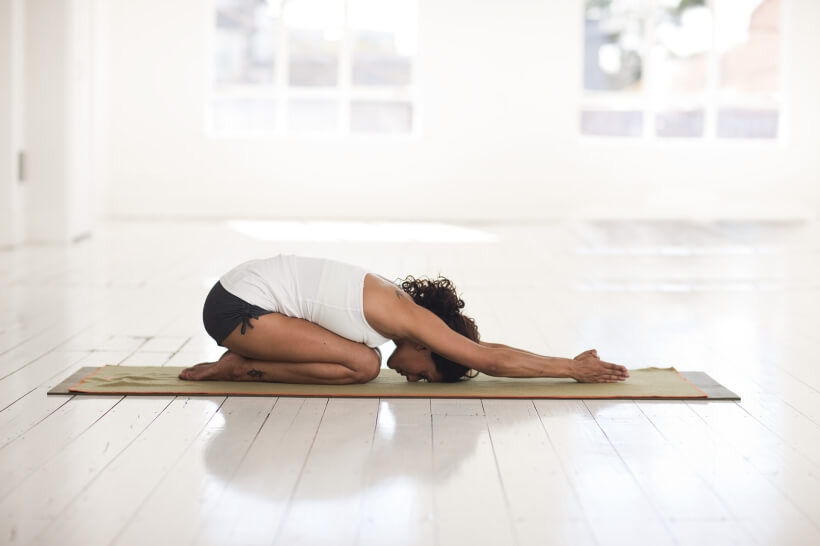Relax…You’ve Got This

It’s not just in your head; stress can cause changes to your body that you can actually feel and see. That’s because your body changes when you’re exposed to ongoing stressors that you don’t think you can handle.
One approach for managing stress involves calming your body down. Once calm, you can approach your stressors differently. This will help you think more clearly and rationally, as opposed to thinking emotionally. Creating a wellness practice that includes elements of meditation, breathing exercises, and yoga will help you to clear your mind and relax your body.
Note: Remember to consult with your primary healthcare provider before engaging in any new exercise regimen. You and your provider can determine what exercise is best for you and your current condition.
Meditation Techniques
The numerous health benefits of meditation can include relief from anxiety and stress, as well as promoting mental health. It can help you improve your outlook on life and even improve your sleep. You don’t need special equipment to meditate – it’s available to everyone, free of charge! There are many styles and techniques of meditation. You can use the following online resources to help get you started:
This Mayo Clinic instructional video offers a guided meditation session to help you relax. Visit the Mayo Clinic Meditation Video website at www.mayoclinic.org/meditation/vid-20084741.
The McMaster University Guided Relaxation CD includes free MP3
audio tracks for diaphragmatic breathing, progressive muscle relaxation, autogenic training, and guided imagery. Visit the McMaster University Guided Relaxation CD website at campusmentalhealth.ca/resource/mcmaster-guided-relaxation-cd/.
Breathing Exercises
Diaphragmatic Breathing: This may be practiced seated, standing, or lying down. Take the posture that feels most comfortable and remember to wear clothing that isn’t constrictive in the waist. Place your hands on your abdomen just below your navel.
Now, slowly, count to three (count out loud one…two…three…); inhale through the nose; feel the nostrils open, not pulling toward each other; and feel the belly expand into your hands first, followed by the chest gently expanding. As you exhale, breathe through the mouth and slowly count to three. Continue to breathe in this way at your own pace. Count with the inhale, one…two…three…, feel the belly expand, and exhale through the mouth, one…two…three, and feel the navel gently draw back toward the spine as you release the breath.
Continue for about 30 seconds up to several minutes. Gradually increase your time with each session. On your next exhale, release that breath and allow your breathing to return to its natural rhythm and pace.
Yoga
Developing and maintaining a regular yoga practice can provide physical and mental health benefits. You can develop strength, flexibility, and harmony in mind and body.
Increasingly, yoga studios are offering classes tailored to the unique needs of returning Service members and the military community. Resources for locating yoga teachers or for finding studios that serve the military community include the following:
Warriors at Ease brings the healing power of yoga and meditation to military communities around the world, especially those affected by combat stress, post-traumatic stress disorder, and trauma. Find a yoga teacher and resources to support you and your family during and after deployment. The Warriors at Ease website is available at warriorsatease.org.
Veterans Yoga Project offers classes for veterans, Service members, and their families and allies. Classes are taught by Registered Yoga Teachers who have received additional training from Veterans Yoga Project. A searchable directory of classes and teachers is available on their website: www.veteransyogaproject.org.
Yoga for Vets is an organization that consists of more than 500 yoga studios and gyms around the country that have committed to giving four free yoga classes to veterans. Founder Paul Zipes, a yoga teacher and veteran of the U.S. Navy, says offering free classes gives veterans a real chance to fall in love with yoga. The Yoga for Vets website is available at www.yogaforvets.org.
Resources for Breathing Exercises
The Breathing Book by Donna Farhi is comprehensive and includes information to help develop a customized practice to fit your personal conditions.
The YogaGlo website at http://www.yogaglo.com offers meditation, yoga, deep relaxation, and breathing classes of varying lengths. Breathwork will be labeled “pranayama.” Monthly subscription rates are involved (this is the Netflix of mind-body wellness).


